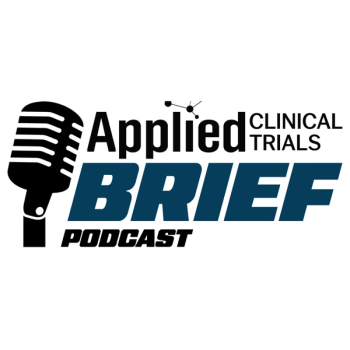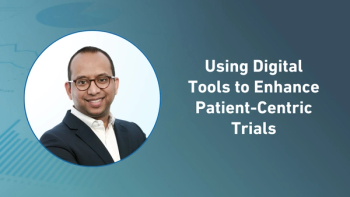
AI and Digital Technology in Regulatory Submissions
A tool-based approach can significantly aid in the harmonization of regulatory requirements, mitigate inadvertent risks, and encourage collaboration by making data sharing more efficient and secure.
The pharmaceutical industry is making significant strides driven by digital innovation and artificial intelligence (AI). As regulatory requirements evolve, leveraging AI-powered tools and digital platforms has become essential for streamlining the submission, review, and approval processes.
These advancements enhance efficiency, improve data exchange, and ensure compliance with health authority expectations. Innovation in the submission process, review, and approval of regulatory data has also progressed over the last few years.1
The COVID-19 pandemic underscored the need for secure, real-time collaboration between regulatory authorities and industry stakeholders to accelerate approvals. A technology-driven, tool-based approach to regulatory submissions can facilitate seamless data exchange, enhance transparency, and reduce processing time.
Business Process as a Service (BPaaS), a cloud-based solution, offers a dynamic and cost-effective framework for managing regulatory workflows, improving operational efficiency, and ensuring regulatory compliance. A secure shared solution could facilitate valuable collaboration between service provider and sponsor to maximize their resources and enhance efficient reviews and submission process.2
According to some estimates, the global market for AI-based solutions in regulatory tools is projected to exceed seven billion US dollars by 2030. Compared to approximately 1.3 billion dollars in 2021, this reflects a compound annual growth rate of over 20%. The implementation of AI in regulatory, and before that in drug discovery, is expected to significantly reduce time and cost in the development phases of new candidates.3
Envisioning customer expectation and agency requirements for a hassle-free submission that meets the predefined timeline
There is a need to transform the submission, review, and exchange of data between service provider and sponsors in regulatory submission process. A cloud-based platform and its associated regulatory tools could house a much more dynamic and iterative exchange.4
For example, there could be a series of data rooms: a sponsor only data room in which data could be uploaded in a continuous fashion as each submission component is finalized, a shared room between the sponsor and the service provider where they may interact on review issues, and a sponsor-only room for confidential review and internal discussions with reviewers.
This approach could also provide a secure platform for sponsor-to-service provider collaboration, such as in a work-sharing or reliance setting. Over time, further efficiencies could be unlocked by the application of machine-based learning and AI as data would be in formats more amenable to this.
Benefits could include automation of routine tasks to save resources and identification of trends in data via digital tools. This would also allow greater use of modeling and simulation which could unlock new insights.
BPaaS model via multitenant option
The multitenant approach in regulatory submissions is both reliable and cost-effective. Clients can use a single application to share data and review submissions easily, while the host provider manages software and hardware updates. This model is also more cost-efficient compared to other tenant architectures
The BPaaS model for multitenant approach is explained in detailed in the below flowchart.
These tools play a crucial role in dynamic, real-time regulatory submissions. They help both the industry and regulatory authorities streamline the submission, review, and approval processes worldwide. A hassle-free and accelerated submission process is possible, benefiting organizations in the regulatory and life sciences industries.
- Established MT cloud computing system in place.
- Inter-linked document management system module with regulatory publishing tool— document life cycle management and authoring,
- Submission tracking and workload management tools for assigning and completing the submissions task to facilitate effective distribution of the task.
- Automation of publishing task to increase the quality and on time submission.
- Regulatory information management database maintenance and application life cycle maintenance.
- Label and artwork for tracking and maintenance of label life cycles.
Implementation
This model is widely used by outsourcing organizations in the regulatory and life sciences industries to provide services to their clients. It is fully validated, ready for use, cost-effective, and can be implemented in less than a week. Clients can access the system to track and view dynamic reports, manage queries, and oversee resolutions until the submission is dispatched to the health authority and archived.
Several regulatory authorities are already implementing digital modernization strategies to enhance their IT capacity, data management, and advanced analytics capabilities. This is essential to keep pace with the rapidly evolving scientific and technological aspects of digital research and development (R&D). A recent example is the FDA’s Technology and Data Modernization Action Plan.4
Regulatory authorities are actively involved in various standards-based data initiatives, public-private partnerships, industry collaborations, and efforts to standardize submission and review data. This tool-based approach can significantly aid in the harmonization of regulatory requirements, mitigate inadvertent risks, and encourage collaboration by making data sharing more efficient and secure.4
References
- Artificial intelligence in healthcare: transforming the practice of medicine; Future Healthc J. 2021 Jul; 8(2): e188–e194.
- Walking the talk in digital transformation of regulatory review;
Front Med (Lausanne). 2023; 10: 1233142. Published online 2023 Jul 26. doi:10.3389/fmed.2023.1233142 - Global market for AI-based solutions in clinical trials in 2021 and a forecast for 2030; AI-based clinical trials solutions market worldwide 2030 forecast. Published by Matej Mikulic Dec 15, 2023
- Digital Innovation in Medicinal Product Regulatory Submission, Review, and Approvals to Create a Dynamic Regulatory Ecosystem—Are We Ready for a Revolution; Front Med (Lausanne). 2021; 8: 660808. Published online 2021 May 21. doi: 10.3389/fmed.2021.660808
About the Authors
Mallikaarjunan R
Malli has 20+ years of experience in regulatory operations and manages Navitas Life Sciences’ Regulatory Services and Technology. He brings rich experience in pharmaceutical; consumer and medical device portfolio having worked with top 10 pharmaceutical companies across the globe helping to develop/support regulatory strategies, operational improvement, program management, predictive forecasting, develop automation/RPA, and resource plans to manage the supply and demand of the workforce.
Prasana Santhuru S
Prasana Santhuru holds a Masters in Pharmacy and is a regulatory affairs and pharmaceutical professional. He has worked with global regulatory authorities, including the U.S. (NDA and ANDA), Europe (MRP/DCP, NA), and ROW markets (MAA). His expertise includes regulatory submissions, post-market evaluation, strategic planning, and filing processes such as MAA, ANDA, GMP, and GLP.
Newsletter
Stay current in clinical research with Applied Clinical Trials, providing expert insights, regulatory updates, and practical strategies for successful clinical trial design and execution.





.png)



.png)



.png)
.png)
